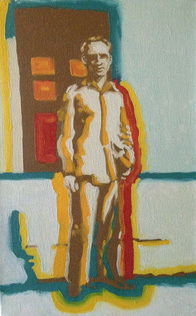 'Danny' by Tom Johnson
'Danny' by Tom Johnson I recently read ‘Harry’s Last Stand: How the World My Generation Built is Falling Down, and What We Can Do to Save it’ by Harry Leslie Smith. This is a book I would highly recommend to anyone, particularly those who may feel, like myself, that there are gaps in their overview of recent British history. Harry Leslie Smith was 91 at the time this book went to print. He writes with the voice of authenticity, telling the story of his life from the 1920s up to the present day. He focuses on the social and political changes that have taken place in Britain over almost a hundred years - the period of his life.
One period in particular that Harry touches upon with poignant detail is the era in which my grandparents grew up, the Great Depression of the 1930s. The level of poverty and human suffering in this country during the Thirties makes shocking reading. The Britain that Harry recalls is often a frightening and daunting place. I felt unsettled, not by the grimness of Harry’s account, but by my own ignorance of a time still within living memory.
I feel I had a fairly well-rounded state education in the UK but I can’t remember touching upon this period in much detail. I was aware of the Wall Street Crash of 1929 which signalled the Great Depression in the States, but mainly remember learning about the great droughts that occurred during the following decade, sometimes known as the “Dirty Thirties”, and the struggles of the Dust Bowl farmers from John Steinbeck novels which I loved reading from the age of about 15. I certainly don’t remember being taught much about the implications of this economic disaster elsewhere in the world and in Britain, except from what I learnt about my family’s own history and by observing my grandparents’ thrifty and prudent ways, that no doubt had their roots in far more austere times than I or my own generation have ever known.
The revelation that I possessed such a blind spot in my understanding of our history has inspired me to read further and hopefully develop a broader picture for myself. This book has highlighted for me some striking parallels between the current prevailing culture of big business, banks and corporations with those equally powerful institutions that dominated in the period immediately preceding the so called Depression of the Thirties. The result of the Crash in 1929 signalled an economic catastrophe that gripped the world for the next decade and had far-reaching repercussions. Learning more about the Crash of 1929 and its crippling effect on ordinary people across the globe, whilst reading recent news stories of corporate greed and high-level tax avoidance, makes me wonder whether lessons were learnt at all.
I couldn’t help but draw comparisons between Harry Leslie Smith’s descriptions of being a child in Britain during those destitute years of the Thirties, and my grandfather’s early life. Born only a year apart, Danny Johnson and Harry Leslie Smith had similar experiences. Both boys’ fathers were coal-miners, Harry’s in the coalfields of Yorkshire, Danny’s in the coal-pits of South Wales. Like Harry’s father, my great-grandfather, also Thomas Johnson, found himself among the six million men who were unemployed in this country. Danny, like Harry, experienced tragedy during his childhood, losing his mother at the age of thirteen. He left school a year later and was fortunate to secure a printer’s apprenticeship for the next seven years. Living with a younger brother and a father who remained unemployed for around 15 years, and with no welfare-state to speak of at that time, my grandfather must have felt a heavy burden of responsibility upon his young shoulders.
He and his brother Elwyn joined the RAF during the Second World War, as did Harry Leslie Smith. They too must have shared in the collective hope of a new start at the end of that war, improved standards of living and universal health care, even for the least fortunate in society. It was the people of their generation that led the way towards the emergence of a National Health Service in 1948, the formation of the Welfare State as we today know it, based on ideas presented to Parliament in the early Forties by Liberal William Beveridge. Most of us in this country were actually delivered into this world by NHS staff, and our families have enjoyed the safety and benefit of free health-care throughout our lives. It is only through reflection and by developing some understanding of the precariousness of working-class existence in this country before World War Two, that we can grasp what Beveridge meant when he described their plight and the need for reform as an “overwhelming need”. The NHS and the welfare state grew from an enlightened social and civil attitude of responsibility towards our fellow human beings in this country. Harry Leslie Smith expresses this clearly:
“The creation of the NHS made us understand that we were in truth our brother’s keeper and that taxation benefits everyone through maintaining not just our roads and sewers but the health of our children, workers and elderly”.
Reiterated throughout the book, are Harry’s misgivings that we should forget, or allow ourselves to remain ignorant of the fact that deprivation and poverty was the lot of so many in our land. It is worth remembering that most of the rights we take for granted were gained after a long hard fight. It was through the grit, determination, courage and conviction of thousands of families with histories like my own that brought about these fundamental changes.
Reading this book reminded me that we must not become complacent, that we must resist inequality and that we must work against the gross disparity of wealth and power. In ‘Harry’s Last Stand’, Harry Leslie Smith has given us a powerful personal testimony.
I’ll end with the words of the folk singer and songwriter Adam McNaughton; the lyrics are from his song ‘Thomas Muir of Huntershill’:
“When you're called for jury service, when your name is drawn by lot
When you vote in an election, when you freely voice your thought
Don't take these things for granted, for dearly were they bought ...”
One period in particular that Harry touches upon with poignant detail is the era in which my grandparents grew up, the Great Depression of the 1930s. The level of poverty and human suffering in this country during the Thirties makes shocking reading. The Britain that Harry recalls is often a frightening and daunting place. I felt unsettled, not by the grimness of Harry’s account, but by my own ignorance of a time still within living memory.
I feel I had a fairly well-rounded state education in the UK but I can’t remember touching upon this period in much detail. I was aware of the Wall Street Crash of 1929 which signalled the Great Depression in the States, but mainly remember learning about the great droughts that occurred during the following decade, sometimes known as the “Dirty Thirties”, and the struggles of the Dust Bowl farmers from John Steinbeck novels which I loved reading from the age of about 15. I certainly don’t remember being taught much about the implications of this economic disaster elsewhere in the world and in Britain, except from what I learnt about my family’s own history and by observing my grandparents’ thrifty and prudent ways, that no doubt had their roots in far more austere times than I or my own generation have ever known.
The revelation that I possessed such a blind spot in my understanding of our history has inspired me to read further and hopefully develop a broader picture for myself. This book has highlighted for me some striking parallels between the current prevailing culture of big business, banks and corporations with those equally powerful institutions that dominated in the period immediately preceding the so called Depression of the Thirties. The result of the Crash in 1929 signalled an economic catastrophe that gripped the world for the next decade and had far-reaching repercussions. Learning more about the Crash of 1929 and its crippling effect on ordinary people across the globe, whilst reading recent news stories of corporate greed and high-level tax avoidance, makes me wonder whether lessons were learnt at all.
I couldn’t help but draw comparisons between Harry Leslie Smith’s descriptions of being a child in Britain during those destitute years of the Thirties, and my grandfather’s early life. Born only a year apart, Danny Johnson and Harry Leslie Smith had similar experiences. Both boys’ fathers were coal-miners, Harry’s in the coalfields of Yorkshire, Danny’s in the coal-pits of South Wales. Like Harry’s father, my great-grandfather, also Thomas Johnson, found himself among the six million men who were unemployed in this country. Danny, like Harry, experienced tragedy during his childhood, losing his mother at the age of thirteen. He left school a year later and was fortunate to secure a printer’s apprenticeship for the next seven years. Living with a younger brother and a father who remained unemployed for around 15 years, and with no welfare-state to speak of at that time, my grandfather must have felt a heavy burden of responsibility upon his young shoulders.
He and his brother Elwyn joined the RAF during the Second World War, as did Harry Leslie Smith. They too must have shared in the collective hope of a new start at the end of that war, improved standards of living and universal health care, even for the least fortunate in society. It was the people of their generation that led the way towards the emergence of a National Health Service in 1948, the formation of the Welfare State as we today know it, based on ideas presented to Parliament in the early Forties by Liberal William Beveridge. Most of us in this country were actually delivered into this world by NHS staff, and our families have enjoyed the safety and benefit of free health-care throughout our lives. It is only through reflection and by developing some understanding of the precariousness of working-class existence in this country before World War Two, that we can grasp what Beveridge meant when he described their plight and the need for reform as an “overwhelming need”. The NHS and the welfare state grew from an enlightened social and civil attitude of responsibility towards our fellow human beings in this country. Harry Leslie Smith expresses this clearly:
“The creation of the NHS made us understand that we were in truth our brother’s keeper and that taxation benefits everyone through maintaining not just our roads and sewers but the health of our children, workers and elderly”.
Reiterated throughout the book, are Harry’s misgivings that we should forget, or allow ourselves to remain ignorant of the fact that deprivation and poverty was the lot of so many in our land. It is worth remembering that most of the rights we take for granted were gained after a long hard fight. It was through the grit, determination, courage and conviction of thousands of families with histories like my own that brought about these fundamental changes.
Reading this book reminded me that we must not become complacent, that we must resist inequality and that we must work against the gross disparity of wealth and power. In ‘Harry’s Last Stand’, Harry Leslie Smith has given us a powerful personal testimony.
I’ll end with the words of the folk singer and songwriter Adam McNaughton; the lyrics are from his song ‘Thomas Muir of Huntershill’:
“When you're called for jury service, when your name is drawn by lot
When you vote in an election, when you freely voice your thought
Don't take these things for granted, for dearly were they bought ...”
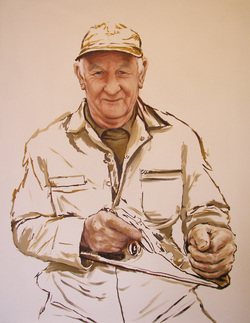

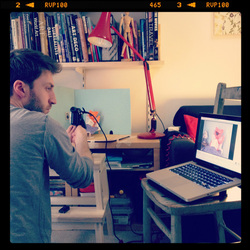

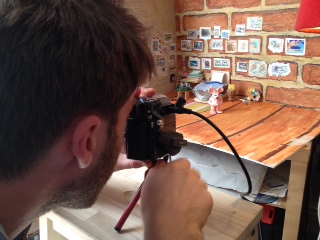
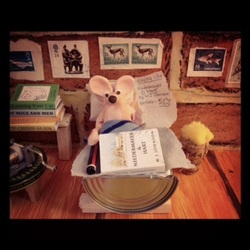

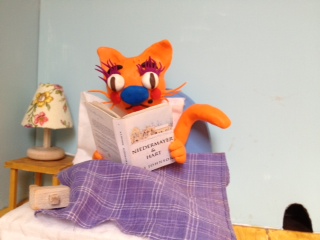
 RSS Feed
RSS Feed